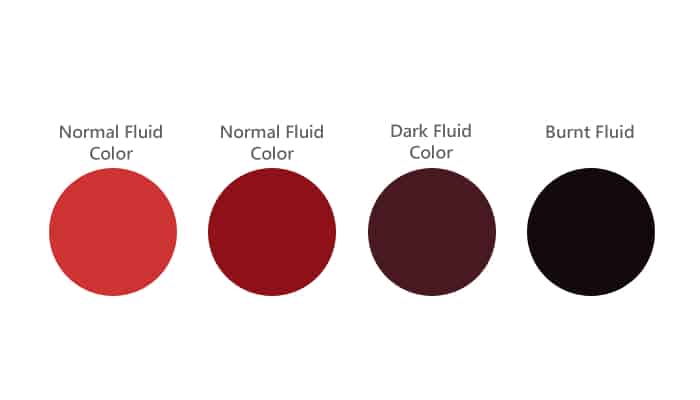Transmission Fluid Specifications for Your Tundra
When it comes to maintaining your 2008 Toyota Tundra with the 5.7-liter engine, one of the most crucial aspects is ensuring you use the right transmission fluid. The transmission fluid you choose not only affects the performance of your truck but also its longevity. Let’s break down what you need to know about transmission fluid specifications for your Tundra.
Manufacturer’s Recommendations
| Popular posts |
|---|
| What to do to prolong the life of your manual gearbox |
| Automatic transmission: what it is, how it works |
Toyota has specific recommendations for the type of transmission fluid that should be used in the 2008 Tundra. According to Toyota’s guidelines, the recommended transmission fluid is:
– Toyota Genuine ATF WS (Automatic Transmission Fluid World Standard)
This fluid is specially formulated to meet the unique requirements of Toyota’s automatic transmissions. Using the correct fluid is essential for optimal performance, as it ensures proper lubrication, cooling, and shifting characteristics.
Specifications of Toyota Genuine ATF WS
Here are the key specifications of Toyota Genuine ATF WS:
- Viscosity: ATF WS has a low viscosity, which helps in smooth shifting and efficient operation of the transmission.
- Temperature Range: This fluid is designed to perform well in a wide temperature range, ensuring that it remains effective whether you’re in extreme heat or cold.
- Friction Properties: The fluid contains friction modifiers that help maintain proper engagement of the clutches, which is vital for smooth gear changes.
- Oxidation Stability: ATF WS is formulated to resist oxidation, which helps prevent sludge buildup and prolongs the life of your transmission.
Why Use the Recommended Fluid?
You might be wondering why it’s so important to stick to the manufacturer’s recommendations. Here are a few reasons:
- Performance: Using the recommended ATF WS ensures that your transmission operates as intended, providing smooth shifts and reliable performance.
- Warranty Compliance: If your Tundra is still under warranty, using non-recommended fluids could void your warranty in case of transmission issues.
- Longevity: The right fluid helps reduce wear and tear on the transmission components, extending the life of your vehicle.
- Resale Value: Keeping your truck in top condition with the right fluids can help maintain its resale value down the line.
Where to Find Toyota Genuine ATF WS
You can find Toyota Genuine ATF WS at various locations:
- Toyota Dealerships: The most reliable source, ensuring you get the genuine product.
- Auto Parts Stores: Many local and chain auto parts stores carry Toyota fluids.
- Online Retailers: Websites like Amazon or specialized auto parts sites often stock ATF WS.
Using the right transmission fluid is non-negotiable if you want your 2008 Toyota Tundra to perform at its best. Stick to Toyota Genuine ATF WS, and your truck will thank you with smooth shifts and reliable performance for years to come.
Recommended Oil Brands for Your Tundra’s Transmission
When it comes to maintaining your 2008 Toyota Tundra with the 5.7-liter engine, choosing the right transmission fluid is essential. While Toyota Genuine ATF WS is the manufacturer’s recommended fluid, many owners have explored various brands that meet or exceed these specifications. Based on feedback from forums and owner experiences, let’s dive into some of the recommended oil brands that Tundra owners trust for their automatic transmissions.
Top Recommended Brands
Here are some of the most frequently mentioned brands in owner discussions and forums:
- Mobil 1: Known for its high-quality synthetic oils, Mobil 1 offers a transmission fluid that many Tundra owners swear by. Its ATF is designed to provide excellent protection and performance, making it a popular choice.
- Valvoline: Valvoline’s MaxLife ATF is another favorite among Tundra owners. It is formulated for high mileage vehicles and has received positive feedback for its ability to reduce wear and improve shifting performance.
- Amsoil: Amsoil is a well-respected name in the synthetic oil market. Their ATF is praised for its longevity and performance, especially in extreme conditions. Many users report smoother shifting and better overall transmission health.
- Castrol: Castrol Transmax is often mentioned in forums as a reliable alternative. It offers good protection and performance, and many users appreciate its affordability compared to OEM fluids.
- Royal Purple: Known for its high-performance lubricants, Royal Purple’s ATF is another option that Tundra owners have found success with. Users often highlight its ability to improve shifting feel and overall transmission responsiveness.
Owner Experiences and Feedback
The experiences shared by Tundra owners can provide valuable insights into the performance of these brands. Here are some common themes and feedback gathered from various forums:
- Performance Improvement: Many owners report noticeable improvements in shifting performance when switching from Toyota Genuine ATF WS to brands like Mobil 1 and Amsoil. Users often mention smoother transitions between gears and reduced lag during acceleration.
- Temperature Resistance: Several users have noted that synthetic options, particularly from Amsoil and Royal Purple, perform exceptionally well in extreme temperatures. This is crucial for those who live in areas with harsh weather conditions.
- Longevity and Wear Protection: Owners frequently mention that using high-quality synthetic fluids leads to less wear on transmission components. This is particularly important for those with higher mileage vehicles, as seen with Valvoline’s MaxLife ATF.
- Cost-Effectiveness: While some owners prefer sticking to OEM fluids, many have found that brands like Castrol and Valvoline offer a good balance of quality and affordability, making them attractive alternatives.
- Compatibility: Most of the recommended brands are compatible with Toyota’s specifications, which gives owners peace of mind when making a switch. Many users have reported no issues after transitioning to these alternative fluids.
Where to Buy
Finding these recommended brands is relatively easy. Here are some common places where Tundra owners have successfully purchased their transmission fluids:
- Local Auto Parts Stores: Chains like AutoZone, O’Reilly Auto Parts, and Advance Auto Parts typically stock a variety of brands, including Mobil 1, Valvoline, and Castrol.
- Online Retailers: Websites like Amazon and RockAuto often have competitive prices and a wide selection of transmission fluids, making it easy to compare options.
- Warehouse Clubs: Stores like Costco or Sam’s Club sometimes carry bulk options of popular brands, which can save you money in the long run.
Choosing the right transmission fluid for your 2008 Toyota Tundra is crucial for maintaining its performance and longevity. While Toyota Genuine ATF WS is the go-to option, many owners have successfully used alternative brands that meet or exceed the necessary specifications. By considering owner feedback and experiences, you can make an informed decision that best suits your vehicle’s needs.
Change Interval for Your Tundra’s Transmission Fluid
Maintaining your 2008 Toyota Tundra’s transmission fluid is essential for ensuring optimal performance and longevity. Understanding the recommended change interval and the nuances of partial transmission oil changes can help you keep your truck running smoothly.
Recommended Change Interval
The recommended change interval for the transmission fluid in your Tundra can vary based on driving conditions and usage. Generally, Toyota suggests the following:
- Normal Driving Conditions: Change the transmission fluid every 60,000 miles (approximately 96,560 kilometers).
- Severe Driving Conditions: If you frequently tow heavy loads, drive in extreme temperatures, or engage in stop-and-go traffic, consider changing the fluid every 30,000 miles (approximately 48,280 kilometers).
These intervals are based on Toyota’s guidelines and are supported by various automotive maintenance resources. Regularly changing the transmission fluid helps prevent issues such as overheating, slipping, and premature wear on transmission components.
Partial Transmission Oil Changes
In many cases, performing a full transmission fluid change can be challenging. This is primarily because a complete fluid exchange often requires removing the transmission from the vehicle, which is not practical for most owners. Instead, partial transmission oil changes are a more accessible and effective method for maintaining fluid quality.
What is a Partial Transmission Oil Change?
A partial transmission oil change involves draining a portion of the old fluid and replacing it with new fluid. This method can help maintain the overall health of the transmission without the need for extensive labor. Here’s how it typically works:
- Drain a portion of the transmission fluid (usually around 4-5 quarts).
- Replace the drained fluid with fresh transmission fluid.
- Repeat the process every 30,000 to 60,000 miles as needed.
Benefits of Partial Changes
There are several advantages to opting for partial transmission oil changes:
- Cost-Effective: Partial changes are generally less expensive than full fluid exchanges, as they require less labor and time.
- Less Downtime: You can perform a partial change quickly, allowing you to get back on the road without the hassle of a lengthy service.
- Fluid Quality Maintenance: Regular partial changes help keep the fluid fresh and reduce the buildup of contaminants, which can lead to transmission issues.
Statistical Support
According to various automotive maintenance studies, regular fluid changes—whether partial or full—are crucial for transmission longevity. A study published by the American Automobile Association (AAA) indicates that vehicles with regularly maintained transmission fluid experience significantly fewer transmission failures compared to those that do not adhere to maintenance schedules.
Additionally, a report from the National Institute for Automotive Service Excellence (ASE) highlights that many transmission issues stem from neglected fluid changes, emphasizing the importance of keeping the fluid clean and at the proper level.
By understanding the recommended change intervals and the benefits of partial transmission oil changes, you can take proactive steps to maintain your 2008 Toyota Tundra’s transmission health. Regular maintenance not only enhances performance but also extends the life of your vehicle.
What Color Should Transmission Fluid Be?


